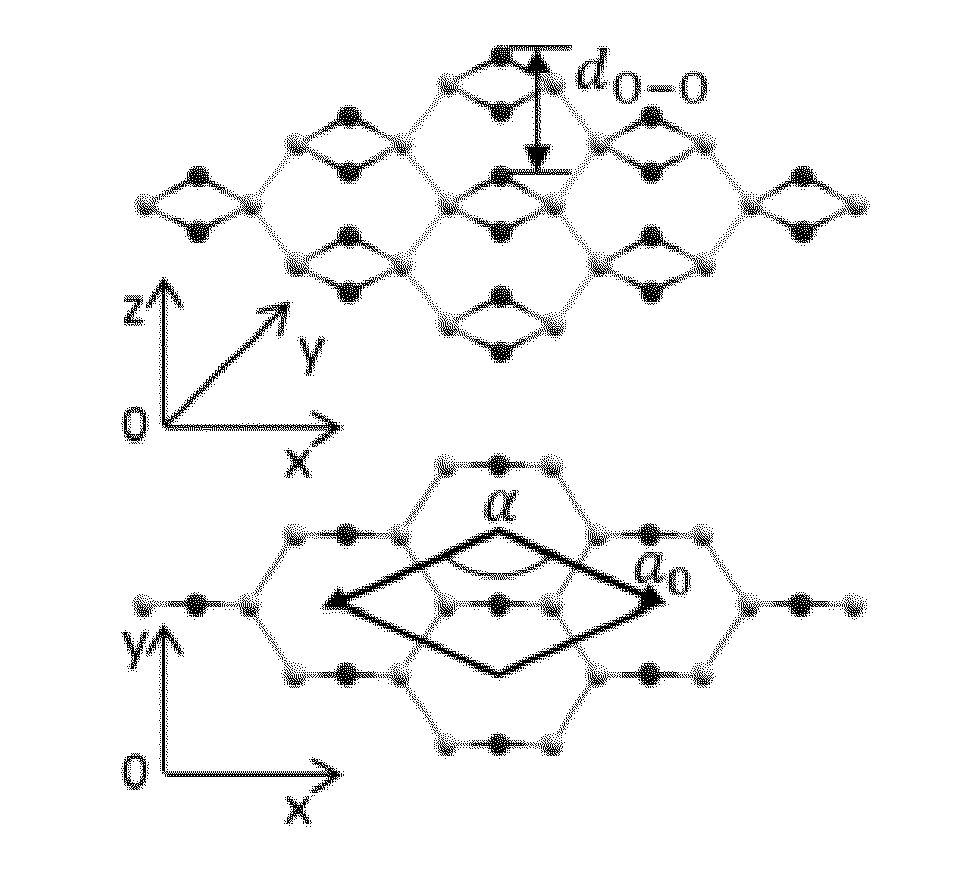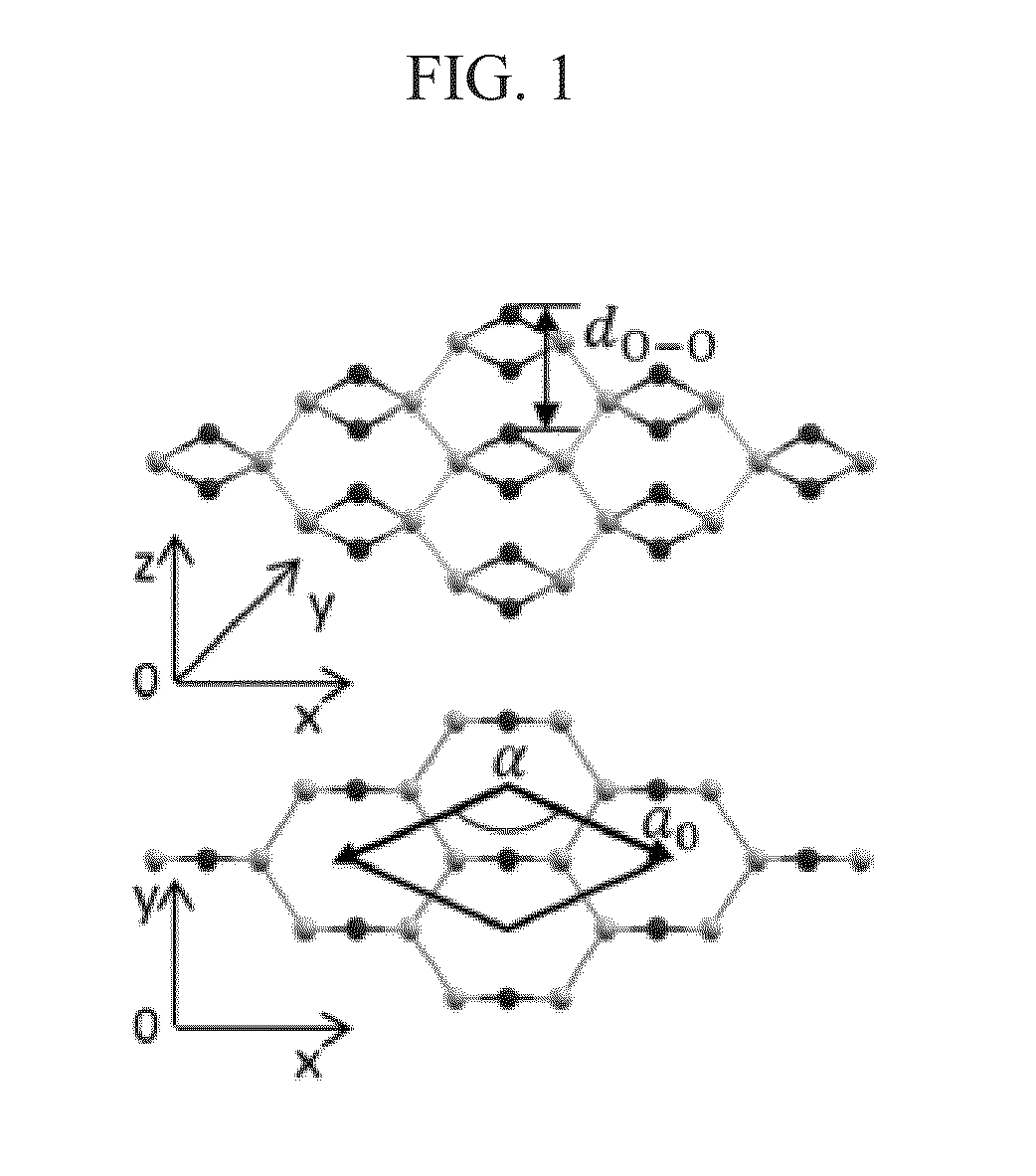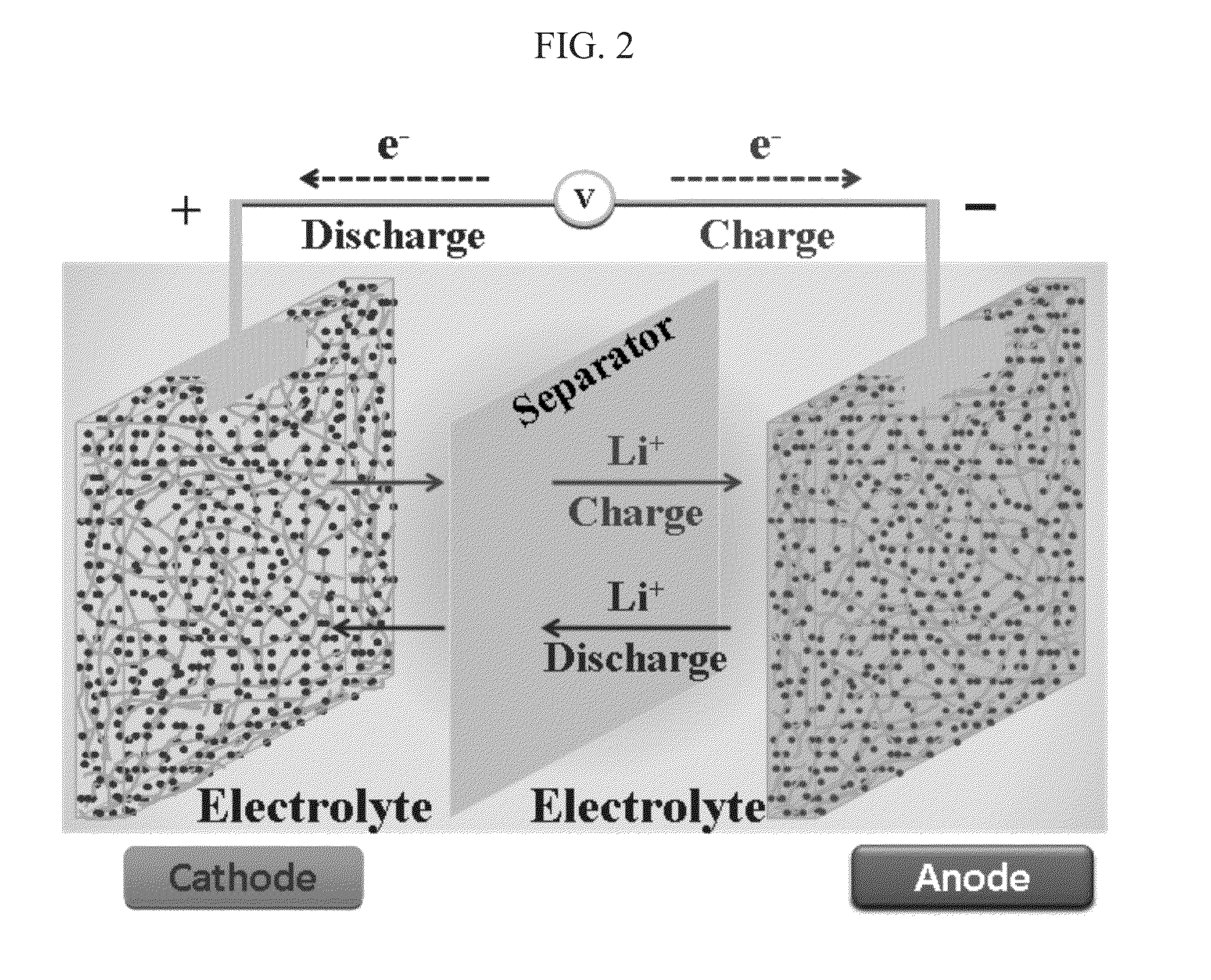Synthesis and applications of graphene based nanomaterials
- Summary
- Abstract
- Description
- Claims
- Application Information
AI Technical Summary
Benefits of technology
Problems solved by technology
Method used
Image
Examples
example 1
Thermal Reduction of Graphene Oxide in Vacuum
[0059]GO suspensions (referred to as “Austin sample”) were synthesized using a modified Hummers method, as described in Sungjin Park, Jinho An, Richard D. Piner, Inhwa Jung, Dongxing Yang, Aruna Velamakanni, SonBinh T. Nguyen, and Rodney S. Ruoff, Aqueous Suspension and Characterization of Chemically Modified Graphene Sheets, 20 (21) CHEM. MATER. 6592 (2008) (hereby incorporated by reference). GO multilayer samples were prepared by drop-casting 2 μl of the resulting suspension onto bare 200 mesh Mo Transmission Electron Microscopy TEM grids. The starting Mo grid was studied by XPS and found to have predominant surface oxidation composition of MoO3, with smaller presence of MoO2. The individual GO monolayers became stacked after water evaporation, forming self-supporting multilayer structures that span the grid holes. Monolayer GO samples were prepared by drop-casting diluted suspensions into Si TEM grids with an ultrathin Si3N4 membrane.
[...
example 2
Thermal Reduction of Graphene Oxide in Vacuum
[0073]Graphene monoxide was synthesized by drop casting 1 μl of blue GO solution followed by 1 μl of GO solution (0.2 mg / ml, Austin sample) on a nickel TEM grid and dried in air for at least an hour. The specific blue GO solution was synthesized by immersing a Mo Transmission Electron Microscope (TEM) grid in 0.05 ml of GO (0.2 mg / ml, Austin sample) solution for 9 days. The resulting cast and grid were subjected to vacuum at approximately 1.3×10−5 Pa and heated in-situ to high temperatures. Electron diffraction patterns were recorded from regions that were exposed to the electron beam during annealing, and also from regions that were not irradiated by electrons at the elevated temperatures. Referring to FIG. 13, alpha phase GMO was first observed at 550° C. Graphene was also observed along with molybdenum dioxide at 600° C., with and without electron beam irradiation.
example 3
Thermal Reduction of Graphene Oxide in Vacuum
[0074]Graphene monoxide was synthesized by drop casting 1 μl of blue GO solution followed by 1 μl of GO solution (Austin sample) on a nickel TEM grid and dried in air for at least an hour. The specific blue GO solution was synthesized by immersing a Mo Transmission Electron Microscope (TEM) grid in 0.05 ml of ACS GO solution for 9 days. The resulting cast and grid were subjected to vacuum at approximately 1×10−4 Pa in a bell jar and heated in a tantalum boat to a temperature exceeding 1200° C. Referring to FIG. 14, in addition to diffraction rings that are typical of GMO spacings, also called 2D alpha phase in our lab books, spots are also seen that correspond to spacings of the 3D beta phase consistent with MoO2.
PUM
 Login to View More
Login to View More Abstract
Description
Claims
Application Information
 Login to View More
Login to View More - R&D
- Intellectual Property
- Life Sciences
- Materials
- Tech Scout
- Unparalleled Data Quality
- Higher Quality Content
- 60% Fewer Hallucinations
Browse by: Latest US Patents, China's latest patents, Technical Efficacy Thesaurus, Application Domain, Technology Topic, Popular Technical Reports.
© 2025 PatSnap. All rights reserved.Legal|Privacy policy|Modern Slavery Act Transparency Statement|Sitemap|About US| Contact US: help@patsnap.com



